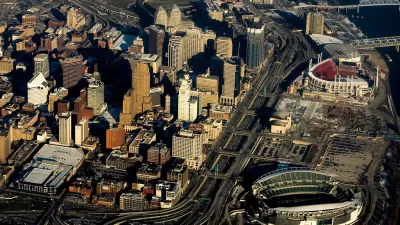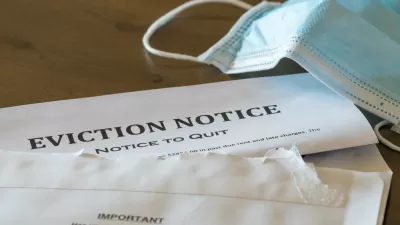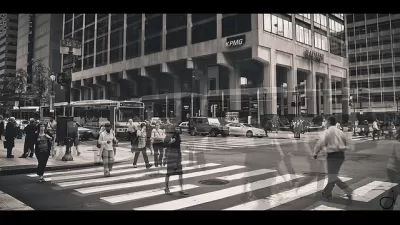Despite the economic blow dealt by last year's lockdowns, business districts in smaller cities like Wilkes-Barre managed to weather the crisis.

Wilkes-Barre, Pennsylvania, a city that once relied on coal production as its main economic driver, has struggled to maintain a vibrant business district. As the pandemic hit, Jonno Rattman, Michael Corkery, Alana Celii, and Gabriel Gianordoli of the New York Times photographed the city's Main Street and its transformation over the course of an unprecedented year, chronicling the challenges and resilience of local businesses.
While some businesses, particularly those already facing hard times before the pandemic, did shut down, "[a] survey by the National Main Street Center of several hundred communities found that for every business that closed in a city the size of Wilkes-Barre, 1.4 new ones opened up." According to an April 2020 survey, "more than half of the downtown Wilkes-Barre businesses that responded said they were at risk of closing permanently. In the end, only six did." Along with the Paycheck Protection Program, which awarded nearly $800 billion through over 11 million loans that kept many small businesses afloat, "[l]ow interest rates and falling rents have also aided entrepreneurship."
But local boosters such as Larry Newman, executive director of the Diamond City Partnership, worry that businesses will continue to be negatively impacted by the losses of the past year even as business returns to normal. "'I’ve begun to worry that many Main Street businesses may face a sort of economic equivalent of Covid long-haul,' he said. 'Making it through the shutdowns only to confront a persistent, longer-term struggle.'"
FULL STORY: How a Hobbled Main Street Survived the Pandemic ‘Asteroid’

Study: Maui’s Plan to Convert Vacation Rentals to Long-Term Housing Could Cause Nearly $1 Billion Economic Loss
The plan would reduce visitor accommodation by 25,% resulting in 1,900 jobs lost.

Alabama: Trump Terminates Settlements for Black Communities Harmed By Raw Sewage
Trump deemed the landmark civil rights agreement “illegal DEI and environmental justice policy.”

North Texas Transit Leaders Tout Benefits of TOD for Growing Region
At a summit focused on transit-oriented development, policymakers discussed how North Texas’ expanded light rail system can serve as a tool for economic growth.

San Diego County Sees a Rise in Urban Coyotes
San Diego County experiences a rise in urban coyotes, as sightings become prevalent throughout its urban neighbourhoods and surrounding areas.

Los Angeles County Invests in Wildfire Recovery for Parks, Trails, and Open Space
The $4.25 million RESTORE Program supports the recovery of parks, trails, and open spaces damaged by the January 2025 wildfires through targeted grants that promote community healing, wildfire resilience, and equitable access to nature.

Nevada Bills Aim to Establish Home Insurance Assurance Amidst Wildfire Risk
Republican sponsor hopes the FAIR plan would be “a true market of last resort.”
Urban Design for Planners 1: Software Tools
This six-course series explores essential urban design concepts using open source software and equips planners with the tools they need to participate fully in the urban design process.
Planning for Universal Design
Learn the tools for implementing Universal Design in planning regulations.
Alamo Area Metropolitan Planning Organization
City of Santa Clarita
Institute for Housing and Urban Development Studies (IHS)
City of Grandview
Harvard GSD Executive Education
Toledo-Lucas County Plan Commissions
Salt Lake City
NYU Wagner Graduate School of Public Service





























